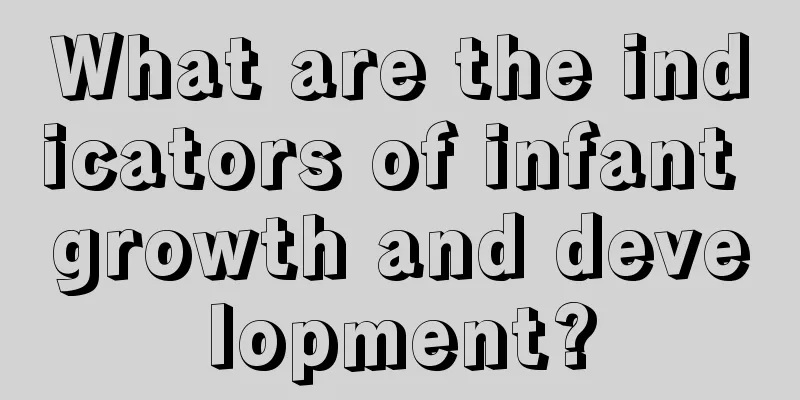What are the indicators of infant growth and development?

|
Generally speaking, everyone's growth begins in infancy. In fact, there are certain clinical indicators for infant growth and development. For infants of different ages, the requirements for growth and development indicators are also different. So, what are the indicators for infant growth and development? This article specifically introduces the growth and development indicators from the baby's birth to five months. Newborn baby: A newborn baby has red and cool skin, wet hair sticking to the scalp, small hands clenched tightly, a loud cry, and a relatively large head. In terms of feeding, spitting up milk often occurs after feeding. One month old baby: The baby starts to breastfeed regularly, so the growth rate is very fast. As the baby enters the fourth week, the baby's motor skills have developed greatly. The baby is very cute now, with a round little face and soft skin. Two-month-old baby: The daily life of a two-month-old baby begins to become regular, and a fixed feeding time is also formed. As a parent, you should massage your baby regularly and take your baby outdoors often. Three-month-old baby: A three-month-old baby has basically adapted to the surrounding environment, and various body functions have begun to develop. He will control his hands and feet to slap objects that are moving around him or in front of him. Four-month-old baby: At four months old, the head circumference and chest circumference of the baby are roughly equal. The baby is more than 10cm taller than when he was born, and his weight is about twice that when he was born. When lying prone, the baby's upper body is completely lifted and perpendicular to the bed; the legs can be raised to kick off clothes and quilts and hanging toys. Five-month-old baby: In terms of diet, a 5-month-old baby begins to prepare for weaning; in terms of parent-child interaction, he can recognize his mother and close people and respond to them. From the above, we can see that the requirements for infant growth and development indicators at different age stages will also be different. The introduction to infant growth and development indicators at different age stages in this article is believed to have helped people have a detailed understanding of the knowledge of infant growth and development indicators, so as to make corresponding preparations during the infant's growth process. |
<<: How to treat a baby coughing while sleeping?
>>: What should we pay attention to when infants grow and develop?
Recommend
What should I do if my child has a hunched back?
In daily life, every parent hopes that their chil...
Symptoms of a child having a fever due to shock
Unlike adults, children's organs are not full...
What should I do if my child doesn’t like to talk?
When talking about children, the first thought th...
What are the symptoms of roundworms in children?
Every parent hopes that their children can grow u...
4.5 month old baby milk
How much milk should a 4.5-month-old baby eat to ...
What to do if your child has pigmentation?
Many children have recently developed pigmentatio...
Nursing measures for convulsions in children
I believe many parents are familiar with pediatri...
White discharge from the girl's vagina
In the case of a girl with white discharge from h...
What are the symptoms of a baby's heart problem?
Every baby is the hope and future of a family fro...
Is it a calcium deficiency if a child sweats on his head while sleeping?
Many parents will say that their babies often swe...
Which department should I go to for phimosis surgery on my child?
It is a very common phenomenon for children to ha...
What to do if your child has blisters in the throat
Throat blisters are quite common, not only in chi...
Measuring the temperature of newborn babies
Every baby needs careful care and attention after...
What is the best treatment for baby eczema?
Babies tend to cry easily when they have skin dis...
What can children eat to strengthen their spleen and stomach?
Many children don't like to eat much due to s...









